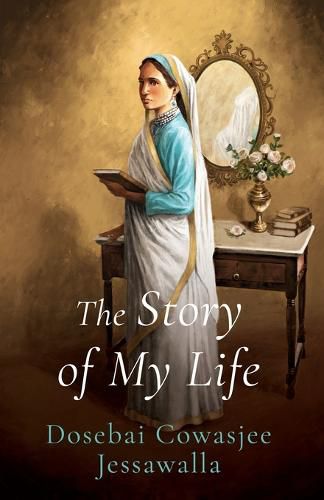Readings Newsletter
Become a Readings Member to make your shopping experience even easier.
Sign in or sign up for free!
You’re not far away from qualifying for FREE standard shipping within Australia
You’ve qualified for FREE standard shipping within Australia
The cart is loading…






This title is printed to order. This book may have been self-published. If so, we cannot guarantee the quality of the content. In the main most books will have gone through the editing process however some may not. We therefore suggest that you be aware of this before ordering this book. If in doubt check either the author or publisher’s details as we are unable to accept any returns unless they are faulty. Please contact us if you have any questions.
The granddaughter of Seth Cursetjee Manekjee Shroff, the noted philanthropist
whose statue in Byculla Mumbaikers fondly call 'Khada Parsi', Dosebai Cowasjee
Jessawalla (1832-1911) was one of the first Indian girls to receive the benefits of
an English education. This decision made by her mother, Meheribai, triggered both
criticism from the Parsi community and mockery from the popular press. However,
its life-changing effects were apparent in just a few years-and endured for a
lifetime-as Dosebai became a part of both Indian and Western society and was
empowered in ways unimaginable for most women at the time. In her lifestyle and
choices, she proved herself to be of brave spirit and independent mind.
A formidable woman with a great zest for life, Dosebai marched through the IndianParsi society without a care for its stifling patriarchal norms that bound women to
household drudgery. Dosebai went out into the world with rare confidence: she
attended the Delhi Durbar of 1877 that declared Queen Victoria the Empress of
India; became acquaintances with Governor-General Lytton and his wife; travelled
widely, from Europe-where she met the English monarchs at Windsor Castle and
the Pope in Rome-to Japan and the United States; learnt to drive a car and rode a
hot air balloon.
First published by her sons only months after her death in 1911, Dosebai's
remarkable autobiography describes her youth, education, marriage and global
travels. Her experiences are not just a reflection of the challenges faced even by
privileged women in the nineteenth century, but also of attempts to indigenize
European practices.
A fascinating autobiography, The Story of My Life is also a valuable document about the
evolution of the Parsi community through the nineteenth century, and the merging of
tradition with modern sensibilities during that important time in Indian history.
$9.00 standard shipping within Australia
FREE standard shipping within Australia for orders over $100.00
Express & International shipping calculated at checkout
This title is printed to order. This book may have been self-published. If so, we cannot guarantee the quality of the content. In the main most books will have gone through the editing process however some may not. We therefore suggest that you be aware of this before ordering this book. If in doubt check either the author or publisher’s details as we are unable to accept any returns unless they are faulty. Please contact us if you have any questions.
The granddaughter of Seth Cursetjee Manekjee Shroff, the noted philanthropist
whose statue in Byculla Mumbaikers fondly call 'Khada Parsi', Dosebai Cowasjee
Jessawalla (1832-1911) was one of the first Indian girls to receive the benefits of
an English education. This decision made by her mother, Meheribai, triggered both
criticism from the Parsi community and mockery from the popular press. However,
its life-changing effects were apparent in just a few years-and endured for a
lifetime-as Dosebai became a part of both Indian and Western society and was
empowered in ways unimaginable for most women at the time. In her lifestyle and
choices, she proved herself to be of brave spirit and independent mind.
A formidable woman with a great zest for life, Dosebai marched through the IndianParsi society without a care for its stifling patriarchal norms that bound women to
household drudgery. Dosebai went out into the world with rare confidence: she
attended the Delhi Durbar of 1877 that declared Queen Victoria the Empress of
India; became acquaintances with Governor-General Lytton and his wife; travelled
widely, from Europe-where she met the English monarchs at Windsor Castle and
the Pope in Rome-to Japan and the United States; learnt to drive a car and rode a
hot air balloon.
First published by her sons only months after her death in 1911, Dosebai's
remarkable autobiography describes her youth, education, marriage and global
travels. Her experiences are not just a reflection of the challenges faced even by
privileged women in the nineteenth century, but also of attempts to indigenize
European practices.
A fascinating autobiography, The Story of My Life is also a valuable document about the
evolution of the Parsi community through the nineteenth century, and the merging of
tradition with modern sensibilities during that important time in Indian history.